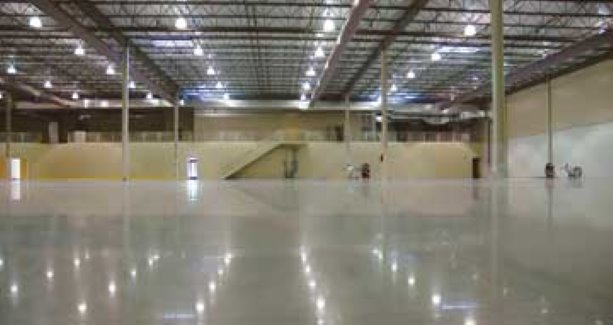With polished concrete finishes becoming more popular in recent years, contractors who offer the service have been finding it difficult to identify themselves as professional craftspeople — not merely contractors with access to a concrete polishing machine.
With polished concrete finishes becoming more popular in recent years, contractors who offer the service have been finding it difficult to identify themselves as professional craftspeople — not merely contractors with access to a concrete polishing machine.
Enter the Technical Institute for Polished Concrete, a North American organization devoted to training concrete polishing professionals and to raising the standards of mechanically processed, ground, honed and polished concrete.
“I got involved with the association as a natural progression of constantly searching for technical information,” said Derek Mackenzie, owner of FloorLab, a Toronto company with eight employees specializing in polished concrete.
“I think I’m one of the few Toronto-area companies that specializes in polished concrete,” he said.
“There are probably a few hundred polishing machines in the city, but the people who own many of them might do everything from floor preparations for coating to waterproofing. I was thinking of beginning a trade association, when I found this group and I did everything I could to impress them and get involved.”
Mackenzie soon established himself as the Canadian voice of the institute and becoming its current vice-president.
In its infancy, the co-founder of the institute, Jim Cuviello, began offering training classes at his facility in Stevensville, Maryland.
“The educational aspect was very important to me,” said Mackenzie.
“In this industry, most of the training is by manufacturers. I have no problem with that, but the training was product-based and not process-based, usually taking place on a piece of concrete floor that had already been polished so often, it couldn’t be polished any more.”
Training courses are now also held in Texas and Nevada, where the institute hopes to set up a permanent training facility.
In seminars, a new concrete surface is poured each time a new class arrives.
“Once it’s fully polished, we jack it out, throw the concrete in the dumpster and try another one,” he said.
“We’re trying to replicate real world conditions.”
Mackenzie said polishing a concrete floor involves more than making it look shiny.
Proper polishing usually involves impregnating the floor with a densifier or hardening chemical that reacts with the calcium hydroxide in the concrete floor. It is then ground, leveled, filled and polished to a high gloss finish.
“The true mark of a properly polished concrete floor isn’t how it looks from a distance, but whether it has the clarity of shine that you can only achieve with thorough refinement of the surface,” he said.
“You can put two polishers side by side with the same equipment on the same floor and one half of the floor can still wind up better looking than the other”
The institute has an accreditation system offering the levels of Tradesman, Craftsman, Master Craftsman and Master Craftsman 50.
Those applying for top-level accreditation must supply detailed photos of two jobs larger than 50,000 square feet, along with photos, work studies and references acquired one year after the work is completed.
Although virtually any concrete floor can be polished—Mackenzie said he’s achieved great results with floor up to 100 years old—he also wants to see polishers consulted by general contractors and architects to specify concrete formulations that will provide the best results.
Polished concrete is only going to become more popular, Mackenzie predicted.
He added that it is being used more often in commercial, residential and institutional settings, mostly because of its sustainability.
To that end, the institute is working to position itself as part of the LEED process.
“If you’re going to install radiant heating in an environmentally friendly concrete slab, why put another surface on top of that, when you can polish it?” he asked.











Recent Comments
comments for this post are closed